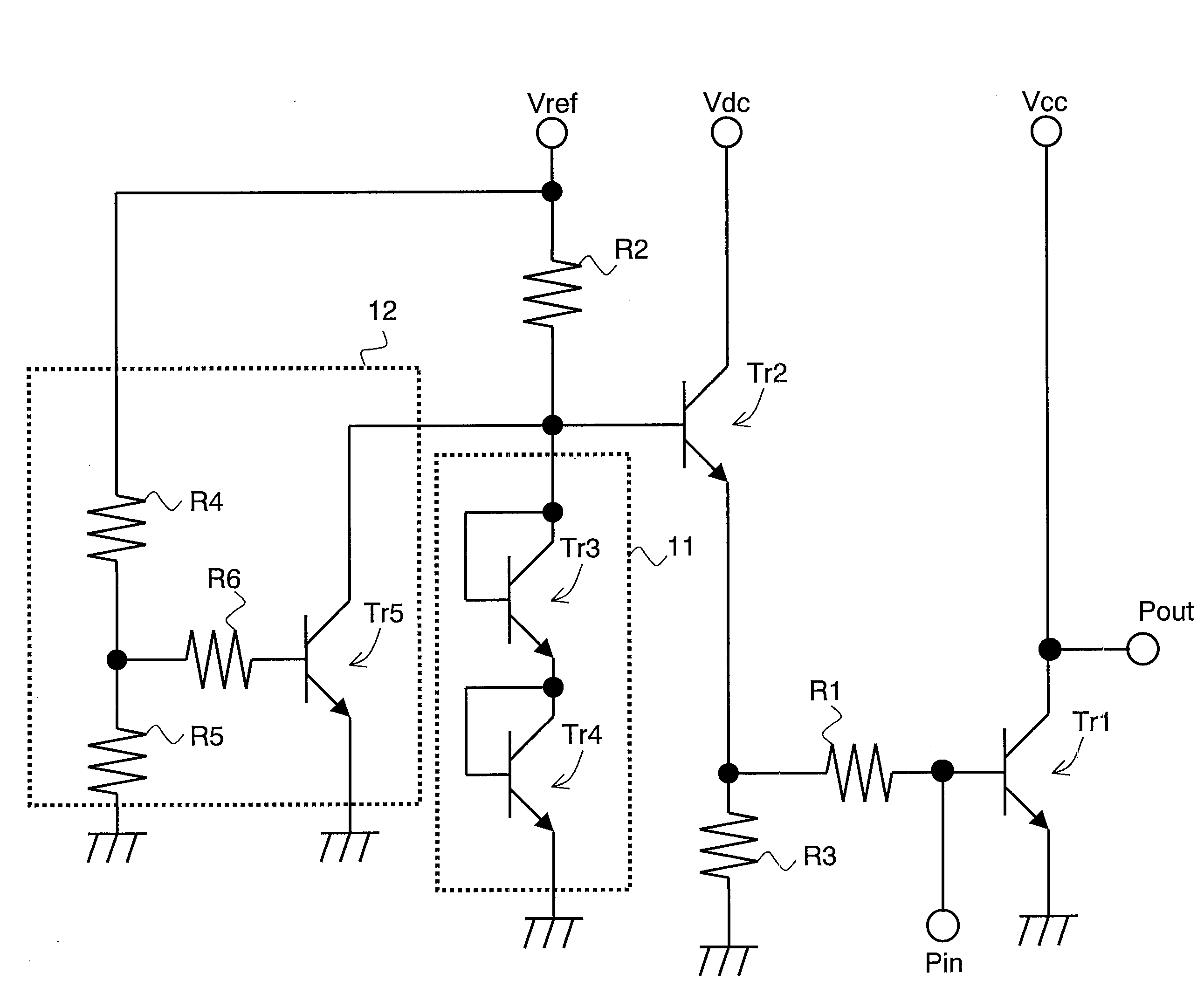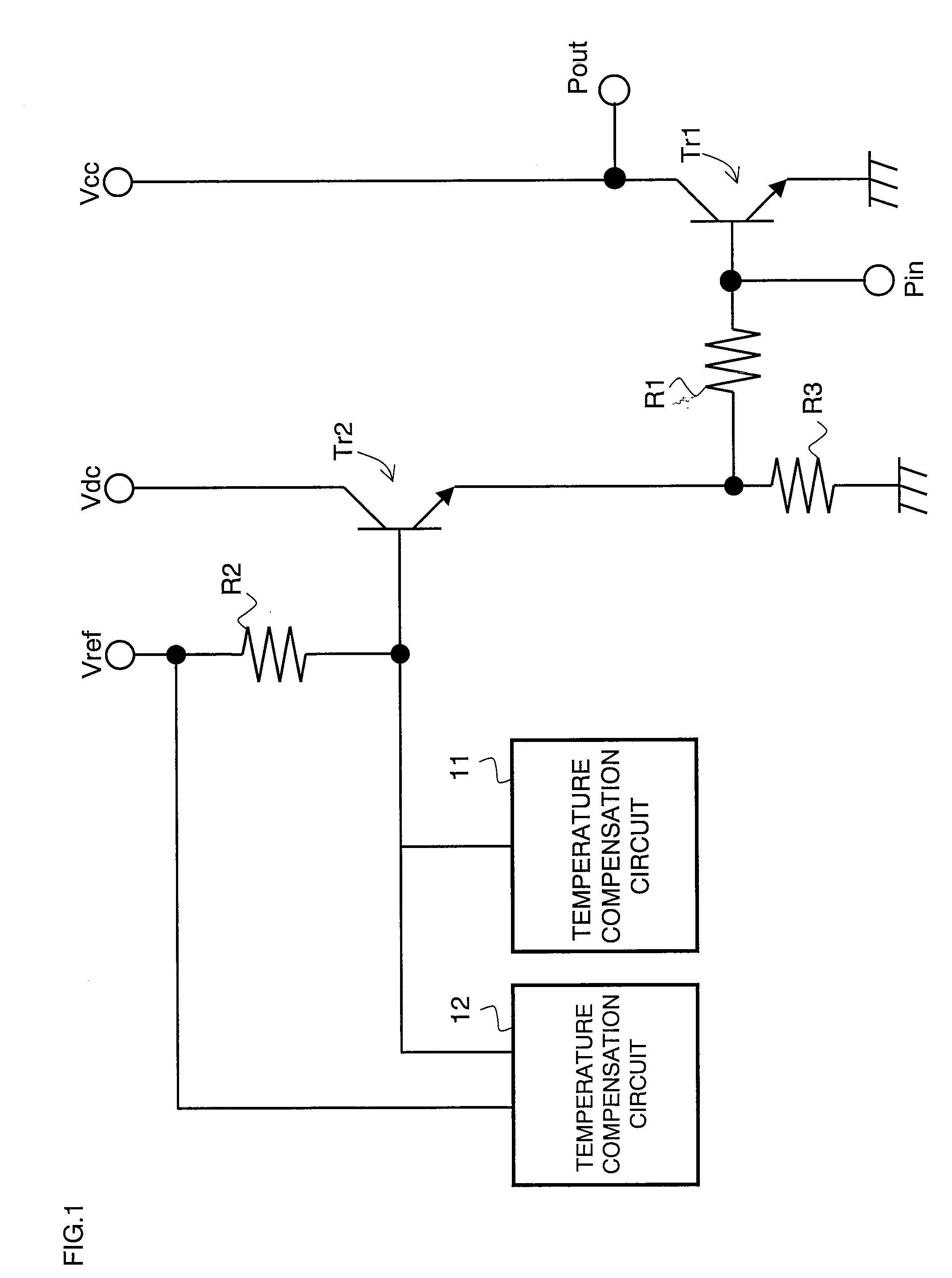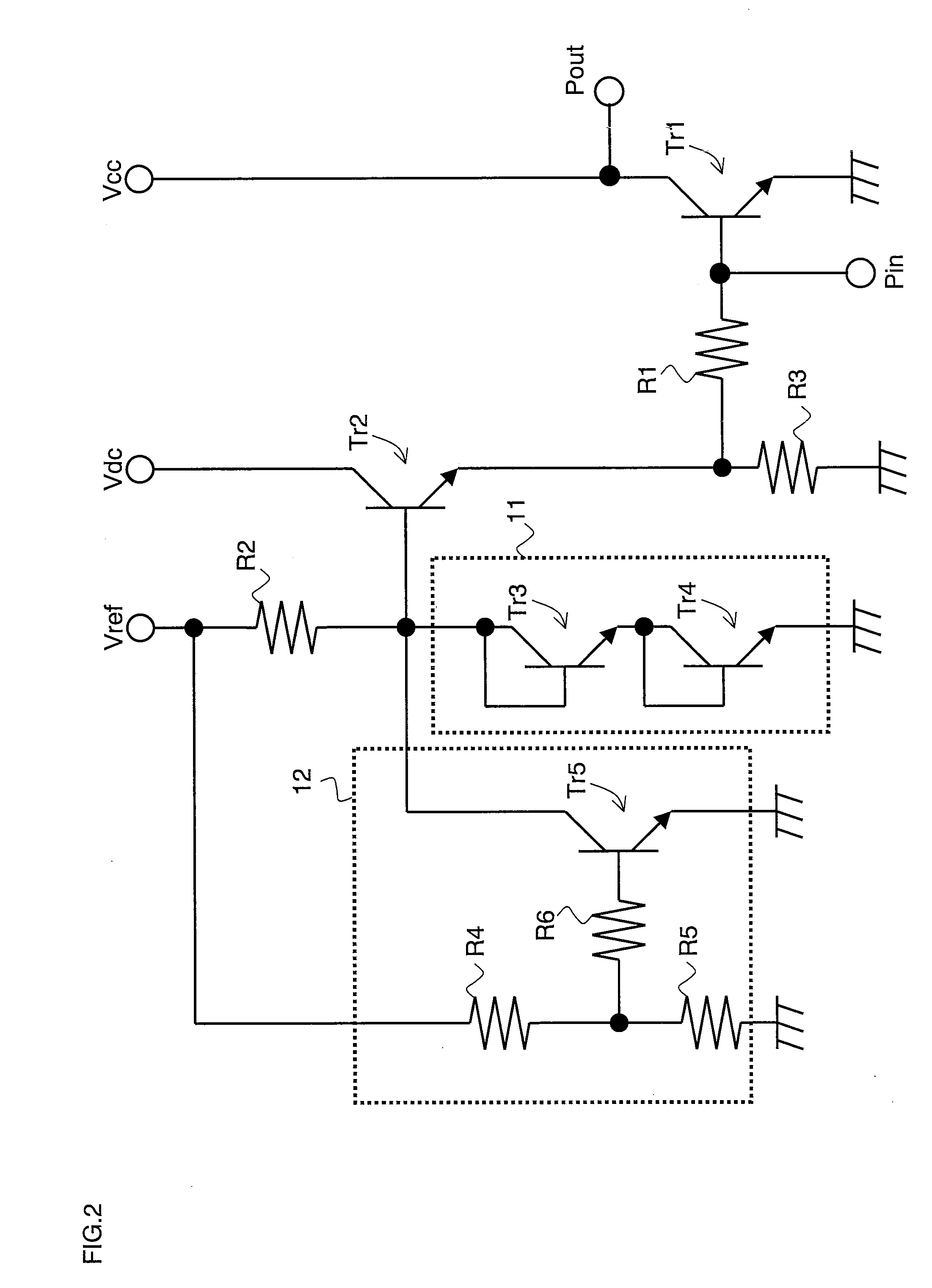Radio-frequency power amplifier
a power amplifier and radio frequency technology, applied in the direction of amplifiers, amplifiers with semiconductor devices only, amplifiers with semiconductor devices, etc., can solve the problems of reducing affecting the miniaturization and cost reduction of mobile phones, and the difficulty of maintaining a constant temperature in the mobile phone, etc., to achieve the effect of sufficient temperature compensation
- Summary
- Abstract
- Description
- Claims
- Application Information
AI Technical Summary
Benefits of technology
Problems solved by technology
Method used
Image
Examples
first embodiment
[0047]With reference to FIG. 1, the circuit configuration of a radio-frequency power amplifier according to a first embodiment of the present invention will be described. FIG. 1 is a diagram showing the circuit configuration of the radio-frequency power amplifier according to the first embodiment. The radio-frequency power amplifier of FIG. 1 includes an amplifying transistor Tr1 and a bias circuit. Note that, in FIG. 1, the same components as those of FIG. 9 will be denoted by the same numerals and therefore will not be described in detail.
[0048]The bias circuit, which supplies a bias current to the base terminal of the amplifying transistor Tr1, includes an emitter-follower transistor Tr2, resistance elements R1, R2 and R3, a temperature compensation circuit 11, and a temperature compensation circuit 12.
[0049]The temperature compensation circuit 11, which is connected to the base terminal of the emitter-follower transistor Tr2, compensates for the idle current of the amplifying tr...
second embodiment
[0061]With reference to FIG. 5, the circuit configuration of a radio-frequency power amplifier according to a second embodiment of the present invention will be described. FIG. 5 is a diagram showing the circuit configuration of the radio-frequency power amplifier according to the second embodiment. The radio-frequency power amplifier of FIG. 5 is different from the radio-frequency power amplifier of FIG. 2 in that the radio-frequency power amplifier of FIG. 5 further includes a mode switching circuit 13. The other components of the circuit configuration of FIG. 5 are the same as those of the circuit configuration of FIG. 2, and therefore will be denoted by the same numerals and will not be described.
[0062]The mode switching circuit 13 includes a power supply circuit 131, a resistance element R7, a resistance element R8, and a transistor Tr6. The base terminal of the transistor Tr6 is connected to the output of the power supply circuit 131 via the resistance element R7. The collecto...
third embodiment
[0066]With reference to FIG. 6, the circuit configuration of a radio-frequency power amplifier according to a third embodiment of the present invention will be described. FIG. 6 is a diagram showing the circuit configuration of the radio-frequency power amplifier according to the third embodiment. The radio-frequency power amplifier of FIG. 6 is different from the radio-frequency power amplifier of FIG. 2 in that the radio-frequency power amplifier of FIG. 6 further includes a temperature compensation circuit 14. The other components of the circuit configuration of FIG. 6 are the same as those of the circuit configuration of FIG. 2, and therefore will be denoted by the same numerals and will not be described.
[0067]The temperature compensation circuit 14, which is similar in configuration to the temperature compensation circuit 12, is connected to the base terminal of the emitter-follower transistor Tr2 and thus the temperature compensation circuit 14, as well as the temperature comp...
PUM
 Login to View More
Login to View More Abstract
Description
Claims
Application Information
 Login to View More
Login to View More - R&D
- Intellectual Property
- Life Sciences
- Materials
- Tech Scout
- Unparalleled Data Quality
- Higher Quality Content
- 60% Fewer Hallucinations
Browse by: Latest US Patents, China's latest patents, Technical Efficacy Thesaurus, Application Domain, Technology Topic, Popular Technical Reports.
© 2025 PatSnap. All rights reserved.Legal|Privacy policy|Modern Slavery Act Transparency Statement|Sitemap|About US| Contact US: help@patsnap.com



